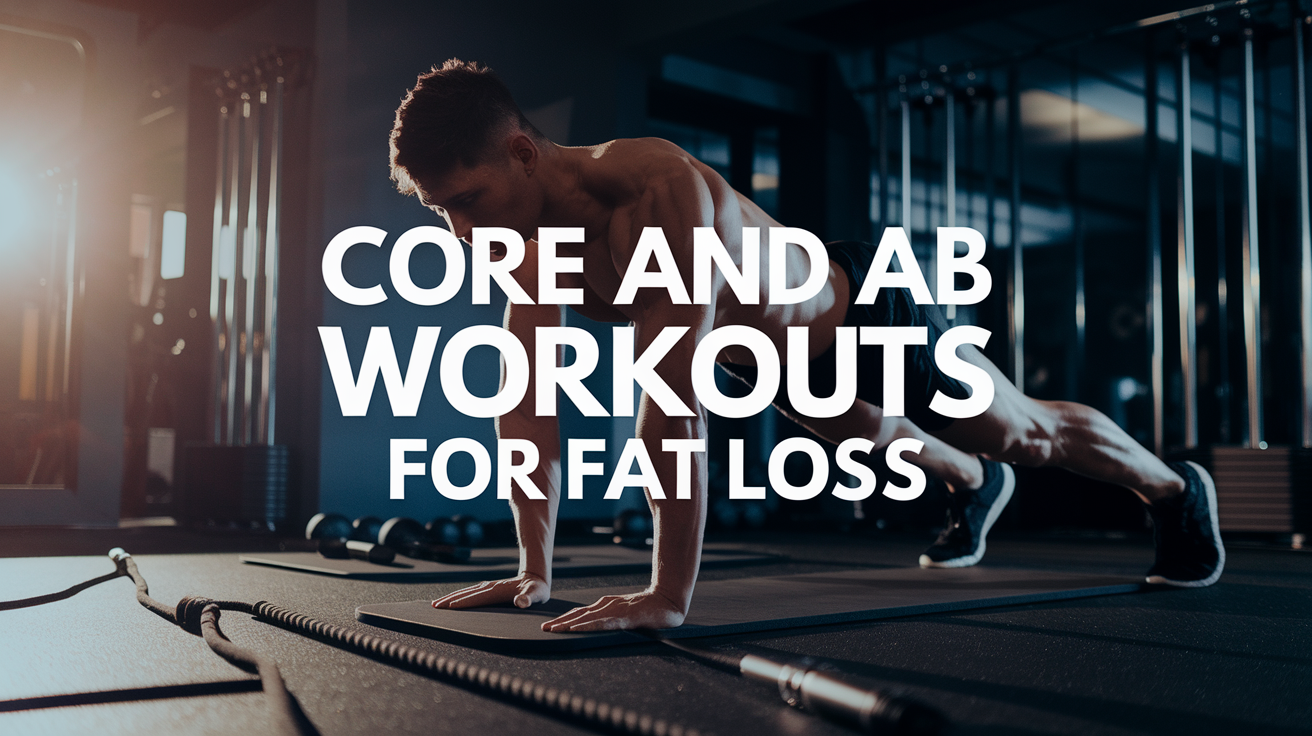Core and Ab Workouts for Fat Loss
Did you know that visceral fat, the fat around your organs, can increase health risks even if you’re at a normal weight? This hidden danger makes targeting belly fat more important than ever. The good news? A strong core can help you tackle this issue while improving your overall fitness.
Building a solid core isn’t just about looking good—it’s about feeling good too. A strong midsection supports better posture, enhances athletic performance, and even helps with everyday activities like lifting groceries. Plus, it plays a key role in burning fat effectively.
In this article, we’ll explore both bodyweight and weighted ab exercises designed to help you shed unwanted weight and strengthen your midsection. Whether you’re a beginner or looking to level up your routine, these tips will guide you toward a healthier, stronger you.
Understanding the Anatomy of Your Core
Your core is more than just a six-pack—it’s a powerhouse of muscles working together. These muscles play a vital role in maintaining your position, supporting your spine, and enabling smooth movement. Let’s break down the key players in your core and how they function.
The Rectus Abdominis and Oblique Muscles
The rectus abdominis is the muscle most people associate with a six-pack. It runs vertically along your abdomen and is responsible for flexion, like when you do a crunch. This muscle helps you bend forward and maintain an upright posture.
Your oblique muscles are located on the sides of your torso. They come in two layers: the external and internal obliques. These muscles enable trunk rotation and side bending, making them essential for twisting motions and lateral movements.
The Role of the Transversus Abdominis
The transversus abdominis is the deepest layer of your core muscles. It acts like a natural corset, wrapping around your abdomen to stabilize your spine and pelvis. This muscle is crucial for maintaining balance and protecting your lower back during everyday activities.
Together, these muscles form a strong foundation for your body. Understanding their roles can help you target them more effectively in your fitness routine.
Benefits of a Strong Core for Fat Loss
A strong core does more than just help you look good—it’s a game-changer for your health. It supports better posture, reduces the risk of injury, and enhances athletic performance. Whether you’re lifting weights or running a marathon, a solid midsection is your secret weapon.
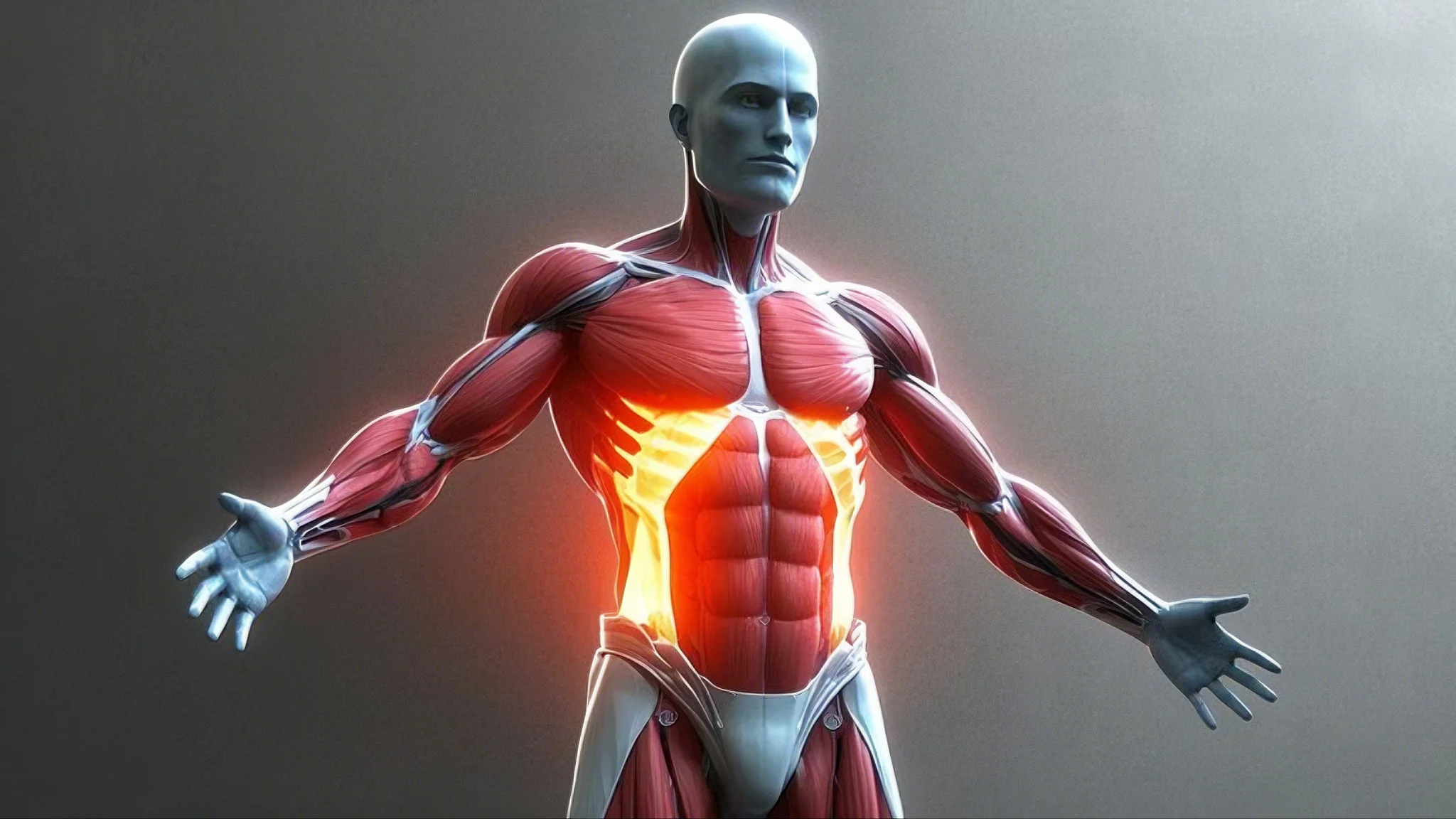
Enhancing Posture and Athletic Performance
A strong core keeps your body aligned, improving your posture and balance. This is especially important during activities like deadlifts or running, where proper form is key. Studies show that athletes with better core stability perform better and have fewer injuries.
For example, a 2019 study found that an 8-week core training program improved running energy levels and endurance. This means less fatigue and more efficiency in your workouts. Plus, a stable core makes everyday movements, like bending or twisting, easier and safer.
Reducing Back Pain and Injury Prevention
Weak core muscles often lead to back pain, especially in the lower back. Strengthening your core supports your spine, reducing pressure and discomfort. Research shows that people with strong cores experience less chronic back pain.
According to a 2021 review, daily core exercises improve balance and independence, especially in older adults. This reduces the fear of falling and related injuries. Even simple movements like planks can make a big difference in protecting your back.
Ready to take your fitness to the next level? Check out these best core exercises to get started today.
The Science Behind Core Activation Techniques
The secret to better movement and stability lies in your core activation. When you engage your core correctly, it’s not just about strength—it’s about precision and alignment. Understanding the biomechanics behind this can take your fitness to the next level.
Your spine and hip alignment play a crucial role during exercises. Proper core activation ensures your spine stays neutral, reducing strain and improving performance. For example, maintaining the right angle during a plank keeps your muscles engaged and prevents injury.
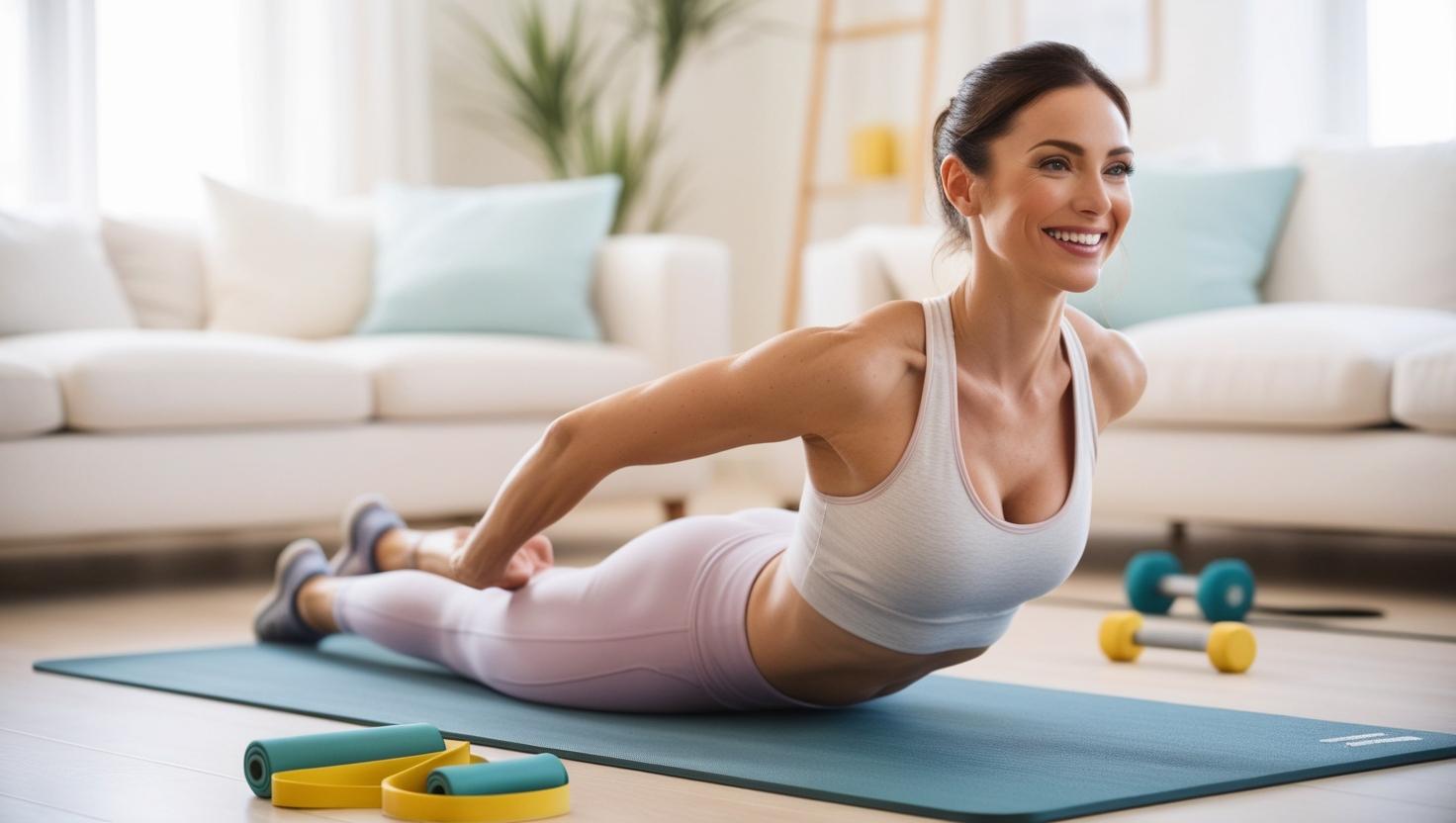
When your hip joints are aligned, your core muscles work more efficiently. This alignment helps distribute weight evenly, reducing pressure on your lower back. Studies show that even a slight change in angle can significantly impact muscle engagement.
Keeping the correct angle is key to maximizing core activation. Whether you’re doing a crunch or a leg raise, small adjustments can make a big difference. For more tips on how to engage your core effectively, check out this guide.
Core activation isn’t just about exercises—it’s about everyday movements. From lifting groceries to running, a strong core supports your spine and enhances stability. By focusing on these techniques, you’ll not only improve your workouts but also protect your body in the long run.
Best Bodyweight Ab Exercises for Beginners
Starting your fitness journey with bodyweight exercises is a smart and effective way to build strength. These moves require no equipment, making them perfect for beginners. Plus, they’re versatile and can be done anywhere—even on your living room floor.
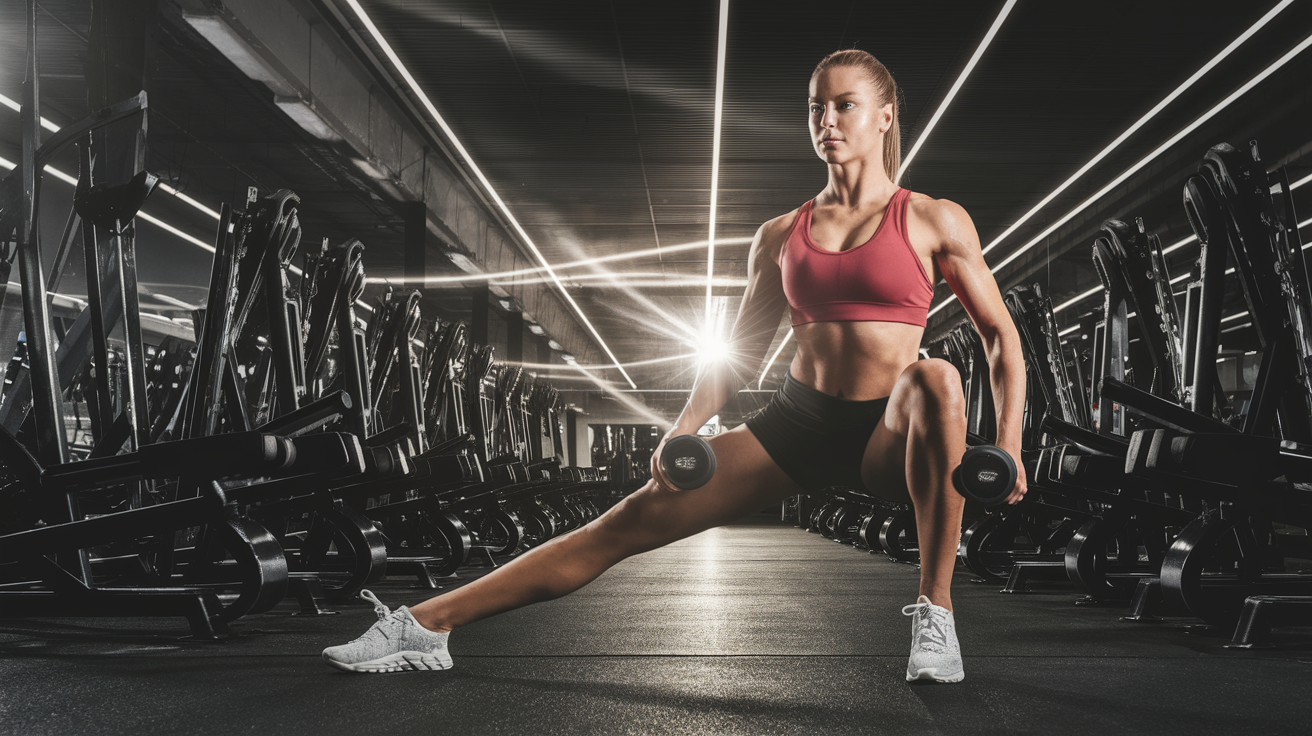
Bicycle Crunches and Bird Dog Variations
Bicycle crunches are a fantastic way to engage your entire core. Lie on your back, lift your legs, and alternate bringing your elbow to the opposite knee. This move targets your obliques and rectus abdominis for a full burn.
The bird dog is another beginner-friendly exercise. Start on all fours, extend one arm and the opposite leg, and hold for 10–30 seconds. This variation improves stability and strengthens your deep core muscles.
Leg Raises and Side Plank Insights
Leg raises are simple yet effective. Lie on your back, keep your leg straight, and slowly lift them to a 90-degree angle. Lower them with control to maximize the burn in your lower abs.
Side planks are great for targeting your obliques. Hold the position for 30 seconds, keeping your body in a straight line. For beginners, you can modify by dropping your knees to the floor.
Ready to get started? Check out this beginner-friendly ab routine for more tips and techniques. Remember, consistency is key—keep practicing, and you’ll see progress in no time!
Effective core-ab-workouts for Fat Loss
Not all core routines are created equal—find the one that works for you. Whether you’re a beginner or a seasoned fitness enthusiast, tailoring your workout to your fitness level ensures better results. Let’s break down how to choose the right routine and make modifications for every fitness level.
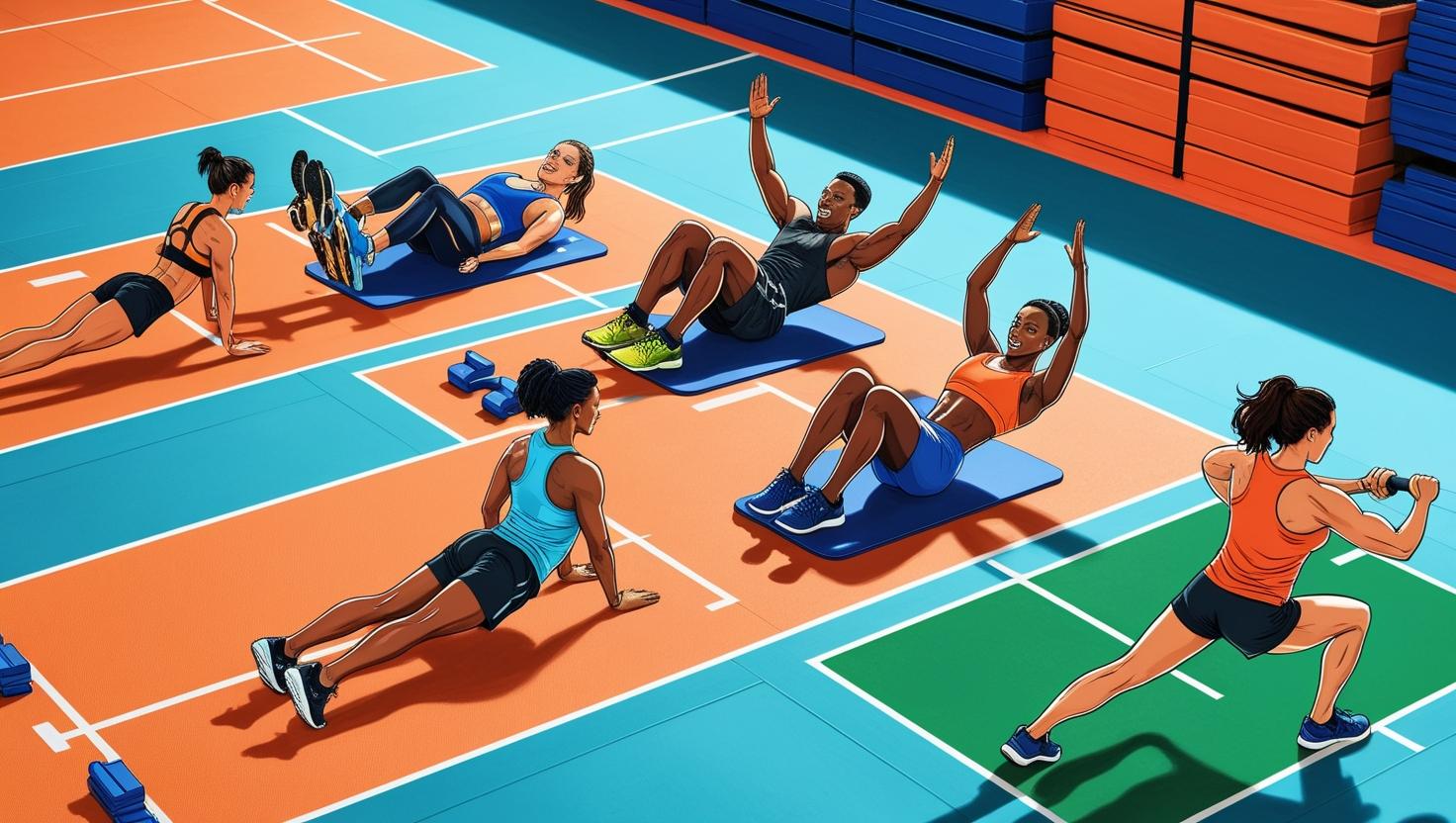
How to Choose the Right Routine
Start by assessing your fitness level. Beginners should focus on basic exercises like planks and leg raises, while advanced individuals can incorporate weighted moves like Russian twists. The CDC recommends at least two days of resistance training per week for optimal results.
Consider your goals. Are you aiming for fat loss, strength, or endurance? Your routine should align with these objectives. For example, fat loss often requires higher intensity and shorter rest periods between sets.
Progressive overload is key. Gradually increase the difficulty of your exercises by adding more sets, reps, or resistance. This keeps your muscles challenged and promotes continuous improvement.
Modifications for Every Fitness Level
Modifying exercises ensures safety and effectiveness. Beginners can start with shorter holds or fewer reps, while advanced individuals can add weights or increase the duration of each set.
For example, if you’re new to planks, start with 20-second holds and work your way up to a minute. Advanced trainers can try side planks or add a weight plate for extra resistance.
Here’s a quick guide to help you tailor your routine:
| Exercise | Beginner | Intermediate | Advanced |
|---|---|---|---|
| Plank | 20-30 seconds | 30-45 seconds | 1 minute |
| Leg Raises | 10 reps | 15 reps | 20 reps |
| Russian Twists | 12 reps (no weight) | 15 reps (light weight) | 20 reps (heavy weight) |
Remember, consistency is more important than intensity. Stick to your routine, and you’ll see progress over time. Ready to get started? Grab a mat, pick your level, and let’s build that strong core!
Advanced Weighted Ab Exercises for Greater Gains
Ready to take your core training to the next level? Advanced weighted ab exercises can help you achieve greater strength and definition. These moves challenge your muscles in new ways, promoting hypertrophy and fat loss. Let’s explore some of the most effective exercises and how to perform them safely.
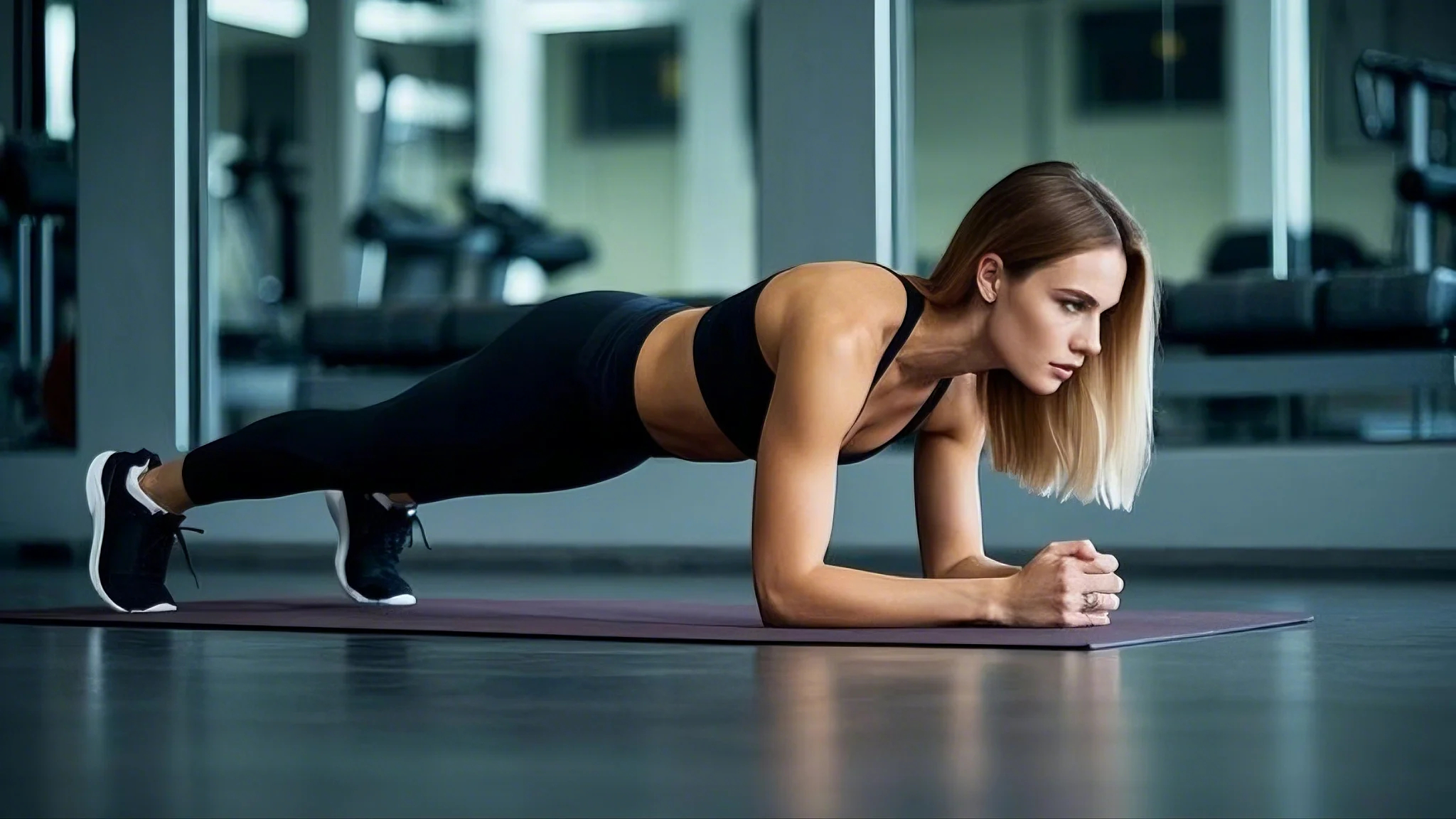
Incorporating Russian Twists and Cable Woodchoppers
Russian twists are a powerhouse move for targeting your obliques and shoulders. Sit on the floor, lean back slightly, and hold a weight with both hands. Twist your torso to each side, keeping your movements controlled. This exercise not only builds strength but also improves rotational stability.
Cable woodchoppers are another excellent option. Stand sideways to a cable machine, grab the handle with both hands, and pull diagonally across your body. This move engages your core, shoulders, and obliques, making it a full-body exercise. Keep your knees slightly bent and your torso stable for maximum effectiveness.
Cable Crunch Techniques for a Chiseled Core
Cable crunches are perfect for isolating your abs. Kneel in front of a cable machine, grab the rope attachment, and pull it down while crunching your torso forward. Focus on squeezing your abs at the bottom of the movement. Hold for 1-5 seconds to increase intensity.
Proper alignment is crucial. Keep your knees firmly planted and avoid using momentum. This ensures your core does the work, not your shoulders or back. Start with lighter weights and gradually increase as you build strength.
- Russian Twists: Great for obliques and rotational strength.
- Cable Woodchoppers: Engages shoulders, core, and obliques.
- Cable Crunches: Isolates abs for a chiseled look.
Remember, consistency and proper form are key. These advanced exercises can take your core training to new heights, but always prioritize safety. Ready to challenge yourself? Grab some weights and get started!
Strengthening Your Lower Back and Abdominal Connection
Building a strong connection between your lower back and abs is key to overall stability. These muscles work together to support your spine, improve posture, and reduce the risk of injury. Whether you’re lifting weights or bending to pick something up, a solid core makes everyday movements safer and more efficient.
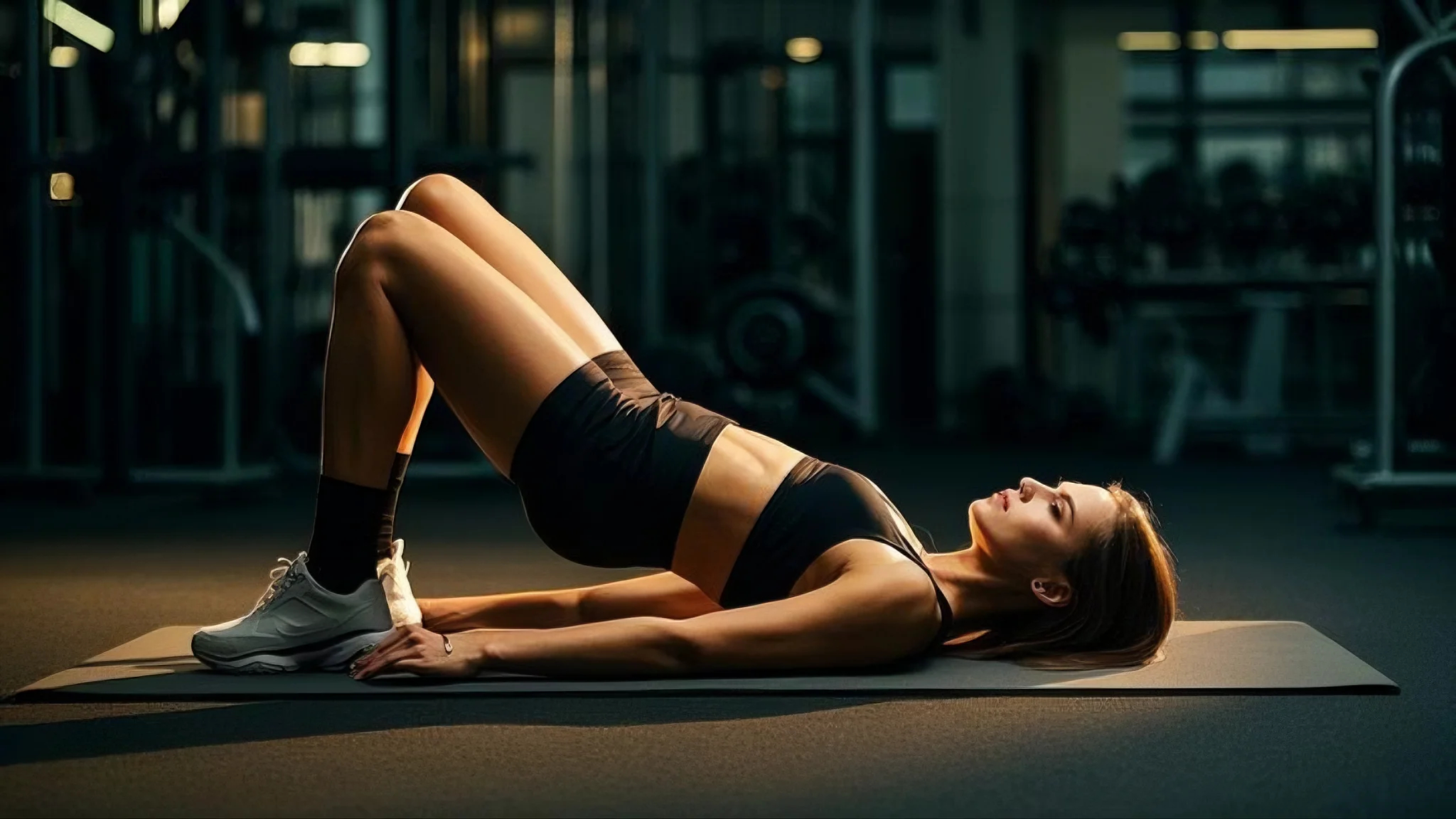
Exercises like bird dogs and cable crunches are excellent for targeting this connection. They not only strengthen your core but also enhance stability on a flat floor or ground. Keeping your back in contact with the back floor during these movements ensures safety and maximizes effectiveness.
Integrating Bird Dogs for Stability
Bird dogs are a simple yet powerful exercise for improving core stability. Start on all fours with your hands under your shoulders and knees under your hips. Extend one arm and the opposite leg, keeping your body in a straight line. Hold for 10–30 seconds, then switch sides.
This move engages your deep core muscles, including the transversus abdominis, which acts like a natural corset. It also strengthens your lower back, making it a great addition to any routine. For beginners, start with shorter holds and gradually increase the duration as you build strength.
Effective Cable Crunch Tips
Cable crunches are perfect for isolating your abs while maintaining lower back support. Kneel in front of a cable machine, grab the rope attachment, and pull it down while crunching your torso forward. Focus on squeezing your abs at the bottom of the movement.
Keep your knees firmly planted on the ground and avoid using momentum. This ensures your core does the work, not your shoulders or back. Start with lighter weights and gradually increase as you build strength. Proper alignment is crucial for maximizing results and preventing injury.
| Exercise | Target Area | Beginner Tips |
|---|---|---|
| Bird Dogs | Core, Lower Back | Start with 10-second holds |
| Cable Crunches | Abs | Use light weights, focus on form |
Remember, consistency and proper form are key. These exercises can take your core training to new heights, but always prioritize safety. Ready to strengthen your lower back and abs? Grab a mat, pick your level, and let’s get started!
Targeting the Lower Abs with Focused Movements
When it comes to sculpting a strong midsection, the lower abs often require extra attention. These muscles are crucial for stability and overall core strength. By incorporating targeted exercises, you can effectively engage and tone this area.

Leg Drops, Hip Lifts, and Scissor Kicks
Leg drops are a fantastic way to work your lower abs. Lie on your back, extend your legs straight up, and slowly lower them toward the floor. Keep your movements controlled, and stop just before your legs touch the ground. This ensures your abs stay engaged throughout the exercise.
Hip lifts focus on lifting your hips off the ground while lying on your back. Keep your legs straight and raise them toward the ceiling, using your lower abs to lift your hips. This move adds an extra challenge to your routine.
Scissor kicks are another effective option. Lie on your back, lift your legs slightly off the ground, and alternate kicking them up and down. Keep your toes pointed and your movements deliberate for maximum impact.
Flutter Kicks to Engage Deep Abs
Flutter kicks are perfect for targeting the deep abs. Lie on your back, lift your legs slightly off the ground, and rapidly kick them up and down in a fluttering motion. Focus on keeping your lower back pressed to the floor to avoid strain.
Perform each movement slowly, taking each second deliberately. This not only increases the intensity but also ensures proper form. Engaging your toes and lower leg muscles adds an extra layer of challenge.
| Exercise | Focus Area | Tips |
|---|---|---|
| Leg Drops | Lower Abs | Stop before legs touch the floor |
| Hip Lifts | Lower Abs, Hips | Use abs to lift hips |
| Scissor Kicks | Lower Abs, Obliques | Keep toes pointed |
| Flutter Kicks | Deep Abs | Press lower back to the floor |
Remember, consistency is key. These exercises may feel challenging at first, but with practice, you’ll notice significant improvements in your core strength and definition. Ready to get started? Grab a mat and let’s target those lower abs!
Designing a Dynamic Core Workout Routine
Transform your core routine by blending flexion and rotation for maximum impact. A balanced approach not only strengthens your midsection but also improves stability and mobility. Whether you’re a beginner or advanced, these tips will help you craft a routine that challenges your core in new ways.

Why Combine Flexion and Rotation?
Flexion exercises, like crunches, target the front of your core. Rotational moves, such as Russian twists, engage your obliques and improve mobility. Combining both ensures your core is strong from every angle. “Variety is the key to avoiding plateaus,” says fitness expert John Smith.
Start with basic flexion moves, like leg raises, and add rotational exercises, such as woodchoppers. Hold each position for a minute to build endurance. Keep your head aligned with your spine to maintain proper form.
Actionable Steps for a Dynamic Routine
- Warm-Up: Begin with 5 minutes of light cardio to get your blood flowing.
- Flexion Moves: Include exercises like planks and leg drops. Hold for 30 seconds to a minute.
- Rotation Moves: Add Russian twists or cable woodchoppers. Perform 10-12 reps per side.
- Cool Down: Finish with stretches to improve flexibility and reduce soreness.
Progress inch by inch for lasting results. Even small improvements, like holding a plank for an extra 10 seconds, add up over time. Consistency is more important than intensity.
Ready to take your core routine to the next level? Grab a mat, pick your moves, and start building a stronger, more dynamic midsection today!
Tips for Mastering Proper Form and Technique
Getting your form right is the secret sauce to effective workouts. Whether you’re a beginner or a seasoned fitness enthusiast, proper technique ensures you get the most out of every move while staying injury-free. Let’s break down how to master form and technique with simple, actionable steps.

Pre-Workout Warm-Up and Stretching Strategies
Before jumping into your routine, a good warm-up is essential. Start with gentle exercises like arm circles or light jogging to get your blood flowing. This prepares your muscles and joints for the workout ahead. “A proper warm-up reduces the risk of injury and improves performance,” says fitness expert Janet Hamilton.
Next, focus on stretching. Dynamic stretches, like leg swings or torso twists, are great for loosening up. Make sure to hold each stretch for 10–15 seconds. This helps improve flexibility and ensures your body is ready for action.
- Arm Circles: Loosen up your shoulders and arms.
- Leg Swings: Improve hip mobility and flexibility.
- Torso Twists: Engage your core and prepare for rotational moves.
Maintaining Proper Alignment
One of the most important aspects of good form is maintaining a straight line from your head to your chest. This alignment keeps your spine neutral and reduces strain on your lower back. For example, during a plank, make sure your body forms a straight line from head to heels.
Here’s a quick checklist to help you stay aligned:
- Keep your head in line with your spine.
- Engage your core to support your lower back.
- Avoid arching or rounding your back.
Proper alignment isn’t just about looking good—it’s about protecting your body. By focusing on these points, you’ll perform exercises more effectively and reduce the risk of injury.
Simple Stretching Strategies
Stretching after your workout is just as important as warming up. Focus on stretches that target the muscles you’ve worked. For example, after a core session, try a seated forward bend to stretch your hamstrings and lower back.
Here are a few stretches to incorporate:
- Seated Forward Bend: Stretches hamstrings and lower back.
- Cat-Cow Stretch: Improves spinal flexibility.
- Child’s Pose: Relaxes your lower back and shoulders.
Remember, consistency is key. By making these strategies part of your routine, you’ll see improvements in your form, performance, and overall fitness. Ready to get started? Grab a mat, warm up, and let’s perfect that form!
Integrating Core Training into Overall Fitness
A well-rounded fitness routine isn’t complete without a strong core. This powerhouse of muscles supports your body in everything from lifting weights to running marathons. By blending core exercises with cardio and strength training, you can achieve better balance, stability, and performance.
Your core isn’t just about abs—it’s the foundation of every movement. A strong core improves posture, reduces injury risk, and enhances athletic performance. Whether you’re doing squats or cycling, your core keeps your body aligned and efficient.
Balancing Strength Workouts with Cardiovascular Exercise
Combining core training with cardio creates a dynamic fitness routine. Start with a 10-minute warm-up, like jogging or jumping jacks, to get your blood flowing. Then, add core exercises like planks or Russian twists to engage your midsection.
Cardio exercises, such as running or cycling, naturally engage your core. But adding focused moves ensures your core muscles get the attention they need. For example, try alternating between burpees and mountain climbers for a full-body burn.
Here’s a simple routine to try:
- Warm-Up: 5 minutes of light cardio.
- Core Moves: 3 sets of 30-second planks.
- Cardio: 10 minutes of high-intensity intervals.
- Cool Down: Stretching to improve flexibility.
Don’t forget the role of your glute muscles. Strong glutes support your core and improve stability. Exercises like squats and lunges activate both your core and glutes, making them a great addition to any routine.
By integrating core training into your workouts, you’ll see improvements in strength, endurance, and overall fitness. Consistency is key—start small and build up as you get stronger. Ready to take your fitness to the next level? Grab a mat, pick your moves, and let’s get started!
Expert Advice for Sustainable Fat Loss
Sustainable fat loss isn’t just about working hard—it’s about working smart. To achieve lasting results, you need a plan that balances effort, recovery, and progress. Let’s dive into expert tips on training frequency, progressive overload, and maintaining proper form to keep you on track.
Training Frequency and Progressive Overload
How often should you train? Experts recommend 3-5 sessions per week for optimal results. This allows enough time for recovery while keeping your body challenged. “Consistency is key,” says fitness coach Jane Doe. “Start with manageable sessions and gradually increase intensity.”
Progressive overload is essential for continuous improvement. This means gradually increasing the difficulty of your workouts. For example, add more reps, increase weights, or extend workout duration. Here’s a simple guide to get started:
| Exercise | Beginner | Intermediate | Advanced |
|---|---|---|---|
| Plank | 20-30 seconds | 30-45 seconds | 1 minute |
| Leg Raises | 10 reps | 15 reps | 20 reps |
| Russian Twists | 12 reps (no weight) | 15 reps (light weight) | 20 reps (heavy weight) |
Proper Rep Schemes and Form
Rep schemes play a crucial role in driving progress. Beginners should aim for 10-12 reps per set, while advanced individuals can push for 15-20. Focus on quality over quantity—each rep should be performed with proper form.
Maintaining the correct starting position is vital. For example, during a plank, ensure your hands are directly under your shoulders and your body forms a straight line. This reduces strain and maximizes effectiveness.
- Tip: Use a mirror to check your form during exercises.
- Tip: Keep your core engaged to protect your lower back.
- Tip: Avoid rushing through reps—slow, controlled movements yield better results.
Measuring Progress Without Overtraining
Tracking progress helps you stay motivated and avoid overtraining. Start by setting small, achievable goals, like holding a plank for an extra 10 seconds or adding 5 reps to your routine. Celebrate these milestones to stay motivated.
Listen to your body. If you feel fatigued or sore, take a rest day. Overtraining can lead to burnout and injury, derailing your progress. “Rest is just as important as training,” emphasizes fitness expert John Smith.
By following these expert tips, you’ll build a sustainable fat loss routine that keeps you strong, healthy, and motivated. Ready to get started? Grab a mat, pick your moves, and let’s make progress together!
Nutrition Strategies to Enhance Ab Workouts
Fueling your body the right way can make all the difference in your fitness journey. Nutrition plays a crucial role in complementing your core and ab workouts, helping you achieve fat loss and muscle repair. Let’s explore how meal timing, protein-rich foods, and healthy eating habits can optimize your results.
Meal Timing and Protein-Rich Foods
Timing your meals can boost your energy during workouts. Eating a balanced meal 1-2 hours before exercising provides the fuel your body needs. Focus on protein-rich foods like lean meats, eggs, and legumes to support muscle repair and growth.
Protein is essential for building and maintaining muscle. The Dietary Guidelines for Americans recommend at least 46 grams of protein daily for women and 56 grams for men. For those aiming to build muscle, consuming up to 1.6 grams of protein per kilogram of body weight can be beneficial.
Here are some protein-packed options to include in your diet:
- Chicken breast: A lean source of protein that’s easy to prepare.
- Greek yogurt: High in protein and perfect for a post-workout snack.
- Lentils: A plant-based protein option rich in fiber.
Healthy Eating Habits for Optimal Results
Adopting healthy eating habits can enhance your overall fitness. Focus on whole, unprocessed foods like fruits, vegetables, and whole grains. These foods provide essential nutrients and fiber, helping you feel fuller longer.
Research shows that increased fruit and vegetable intake is linked to lower body weight and less overall body fat. A 2018 study found that higher fruit intake was associated with reduced belly fat. Incorporating these foods into your diet can support your fat loss goals.
Here are some practical strategies for integrating healthy eating into a busy lifestyle:
- Meal prep: Plan and prepare your meals in advance to avoid unhealthy choices.
- Portion control: Be mindful of portion sizes, especially when dining out.
- Hydration: Drink plenty of water throughout the day to stay hydrated and support digestion.
By focusing on proper meal timing, protein-rich foods, and healthy eating habits, you can enhance your core and ab workouts. These nutrition strategies will help you achieve your fitness goals while maintaining a balanced lifestyle. Ready to take your nutrition to the next level? Start with these tips and see the difference in your performance and results!
Your Next Steps to a Stronger, Toned Core
Taking the first step toward a stronger core is easier than you think. Start by setting specific, achievable goals. Whether it’s holding a plank for an extra 10 seconds or adding more reps to your routine, small wins add up. Tracking your progress with a workout log can keep you motivated and focused.
Consistency is key. Aim for gradual progression rather than quick fixes. Focus on proper form to protect your arm, foot, and glute muscles while maximizing results. Remember, it’s not about perfection—it’s about progress.
Joining community challenges like Gymshark66 can add fun and accountability to your journey. Surrounding yourself with like-minded individuals keeps you inspired and on track. For more tips, check out these best exercises for a stronger core.
Ready to take the next step? Grab your workout gear, set your goals, and start building the stronger, toned core you’ve always wanted. Your future self will thank you!
